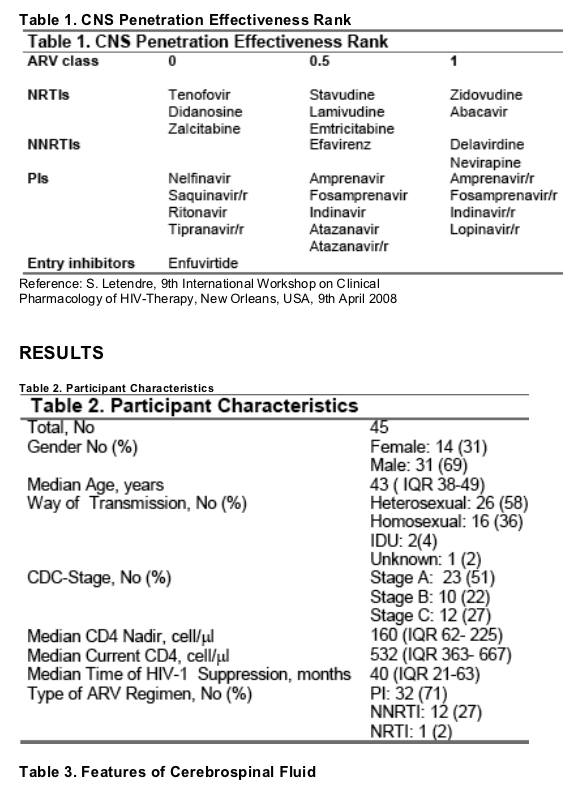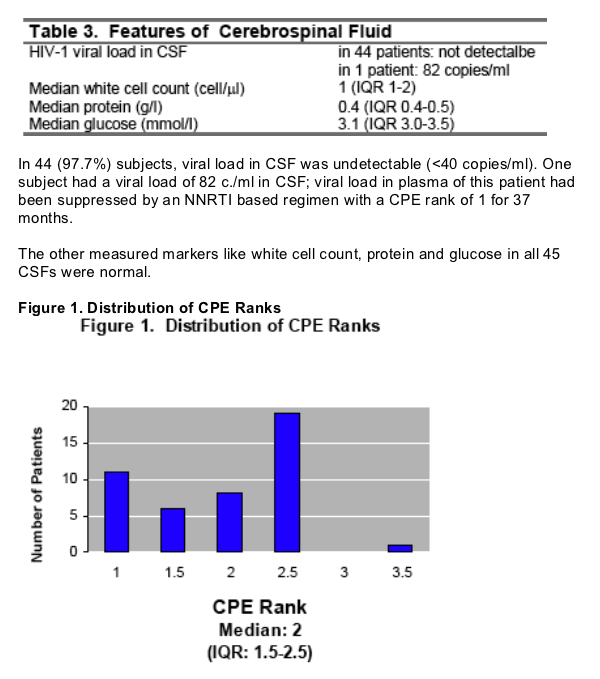 |
 |
 |
| |
HIV-1 viral load in cerebrospinal fluid (CSF) of successfully treated patients on long-term HAART
|
| |
| |
Reported by Jules Levin
IAC Mexico City Aug 3-8 2008
Cusini A.1, Zenger F.2, Yerly S.3, Ledergerber B.1 Fux C.4, Kuzoe B.3,
Schmid P.2, Vernazza P.2, Opravil M.1, and the Swiss HIV Cohort Study
1University Hospital Zurich, 2Cantonal Hospital St. Gallen,
3University Hospital Geneva, 4University Hospital Bern, Switzerland.
This study has been financed in the framework of the Swiss HIV Cohort Study, supported by the Swiss National Science Foundation.
AUTHOR CONCLUSIONS
Successful long-term HAART, defined as HIV-1 RNA in plasma <50 c./ml during at least 3 months, achieved complete suppression of HIV replication in CSF in all but one of 45 patients, even if not all of the drugs taken had an ideal CNS penetration. The remaining standard CSF laboratory markers were normal in all patients, consistent with a lack of CNS inflammation in patients on HAART.
INTRODUCTION
The central nervous system (CNS) may be at risk for persistent HIV replication despite HIV suppression in plasma because of poorer drug penetration into CNS. We assessed HIV-1 viral load in CSF from patients on suppressive
HAART undergoing a lumbar puncture as baseline investigation for an ongoing treatment simplification study (MOST).
METHODS
Patients had to be on triple-combination HAART for >6 months with plasma
HIV-1 RNA <50 copies/ml for >3 months and without prior history of any virologic
treatment failure. So far, 45 CSFs were examined. The HIV-1 viral load in the CSF was quantified by COBAS Ampliprep/COBAS Taqman HIV-1, Roche. Additionally we measured white cell count, protein and glucose in CSF. The CNS
penetration-effectiveness rank (CPE) for each antiretroviral regimen was calculated by summing the penetration rank of 0 (low), 0.5 (intermediate) or 1 (high) for each drug taken at the time of lumbar puncture; a higher CPE rank indicates better CNS penetration (Table 1).


In 44 (97.7%) subjects, viral load in CSF was undetectable (<40 copies/ml). One subject had a viral load of 82 c./ml in CSF; viral load in plasma of this patient had been suppressed by an NNRTI based regimen with a CPE rank of 1 for 37
months.
The other measured markers like white cell count, protein and glucose in all 45 CSFs were normal.

|
| |
|
 |
 |
|
|